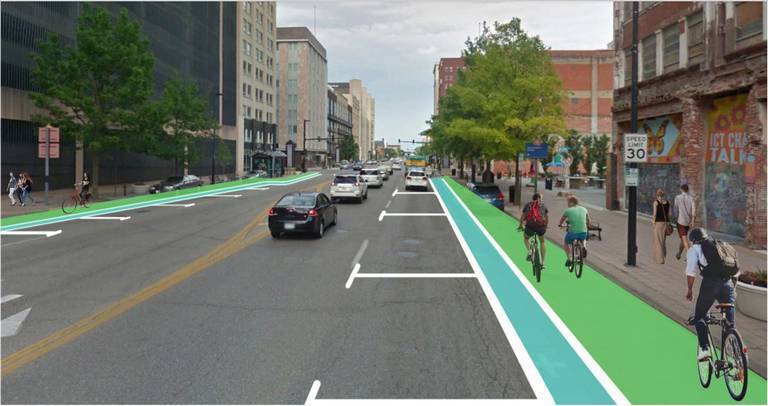07 Nov What Do Streets Have To Do With Health?
The issue we can’t seem to solve
Obesity and obesity-related chronic conditions, such as hypertension and diabetes, is a topic that our members consistently say they want more information and help on. As we know, obesity is a multi-factorial issue that we can’t seem to get our arms around in terms of solutions. We’ve come up with ways to try and prevent and treat the manifestations of obesity and chronic disease, many of which have proven to be unsuccessful and/or expensive.
There are drugs for obesity and for chronic conditions like hypertension and diabetes, as well as weight loss programs, and specific diet regimens. While the medications for obesity are modestly effective, they often come at a hefty price tag. In terms of prevention, weight loss programs and specific diet regimens are typically only successful in the short term, but very rarely produce long-term results. A program that seems to be effective in preventing obesity and diabetes is the Diabetes Prevention Program, but it is available mostly to people whose blood sugars are already abnormal, it is time-intensive, and it can be pricey.
What if there was a way to address these issues without having to enroll your employees into a program, pay for a medication, or spend lots of money on a wellness program? We believe this is possible, simply by improving the environment in which they operate. While we believe changing the work environment is important, what if we set our sights higher to changing the environment of the city in which our employees live.
‘Street Diets’
When I say street diets, I’m actually not referring to Wichita’s amazing food trucks or pop-up park where you can get said food. You may have heard about a recent proposal through the City of Wichita to re-design downtown Douglas Avenue to take it from 5 lanes (2 lanes each way + a turning lane) to 3 lanes (1 lane each way + a turning lane) plus expanded room for bicycles and scooters on each side. The City will first be doing a “Better Block” experiment that will temporarily reduce the number of lanes to see how it might work and how residents would receive it.

We believe, based on well-conducted research, that moving to this type of street design directly impacts the two main goals of the KBGH, which are 1) to improve the health of our employees and 2) ultimately to lower healthcare costs. As we know, likely more than 80% of a person’s health is determined outside the doctor’s office, and much of it is determined by their environment. Additionally, and paradoxically, data shows that the more a country spends on healthcare, the worse their health outcomes are. The United States spends more than $1 trillion more than the second highest spending country in the OECD, yet we are ranked #35 in the Bloomberg Healthiest Country Index, and falling. We’re even ranked worse than Cuba, which in addition to being a repressive dictatorship, spends less than a tenth of what we do on healthcare. How is that?
A large reason is because the more a country spends on healthcare, that likely means they are paying less for social and public health infrastructure—part of the other 80%–that helps to prevent the need for healthcare. Public health infrastructure, in this case, includes creating a more dense, walkable and bikeable city via city and street design. There is good data to show that there is a lower prevalence of obesity and diabetes in people who live in these types of cities.
Road diets are nothing new, in fact they’ve been around for several decades. However, new research is beginning to show how valuable they are, and not just for health, but for the protection of pedestrians, boosting economic development, and attracting and retaining young talent, just to name a few. In fact, several members of the Kansas Business Group on Health have recently moved or expanded operations downtown for the purpose of being in a walkable and bikeable place that their employees desire.
As the Kansas Business Group on Health, we have the opportunity to express our support of this type of street design. If you are interested, would like to learn more, or have comments, please contact us.

